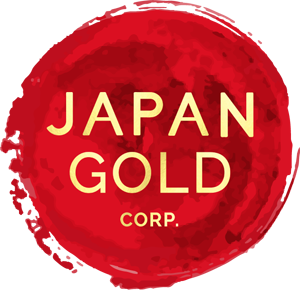Exploration
Japan Gold Exploration Work and Results: Japan Gold conducted a program of reconnaissance field work in August-September 2017, to validate the occurrence, conduct preliminary geological mapping and assess the prospectivity of the Minamikayabe AAA lithocaps for copper and gold. The work program included:
- SWIR spectrometer alteration survey (Plus Minerals) – 131 spectral analyses;
- Surface rock geochemical survey – 69 gold and multi-element analyses (ALS);
- Surface rock geochemical survey – seven whole-rock lithogeochemical analyses (ALS);
- Petrological study and lithogeochemical analysis – six rock samples from the lithocap and less-altered host-rocks (Dr Tony Crawford); and
- Geochemical metal zoning analysis (Dr Steve Garwin).
The reconnaissance work program produced encouraging results and confirmed the occurrence of a two large AAA lithocaps hosted in a package of Late Miocene-Pliocene andesitic-dacitic volcanic rocks. The western lithocap (Mitsumoriyama) is exposed between about 590 and 425 m ASL; it is Na-K alunite-pyrophyllite-diaspore dominant and contains several massive and vughy silica ledges. Selective grab rock samples gave strong gold and multi-element (pathfinder) results, including up to 0.58 ppm gold, 6.2 ppm silver, 369 ppm copper, 12 ppm molybdenum, 32 ppm tin, 227 ppm arsenic, 66 ppm antimony, 23 ppm bismuth, 17 ppm selenium, and 9.5 ppm tellurium.
The eastern lithocap (Nukeishi) is exposed between about 450 and 270-m ASL; it is K alunite-pyrophyllite-diaspore dominant and contains several massive and vughy silica ledges. Selective grab rock samples taken gave weaker gold and multi-element results; characterized by maxima of 0.05 ppm gold, 0.73 ppm silver, 51 ppm copper, 38 ppm molybdenum, 6.2 ppm tin, 155 ppm arsenic, 4.7 ppm antimony, 9.3 ppm bismuth, 15 ppm selenium, and 8.0 ppm tellurium.

